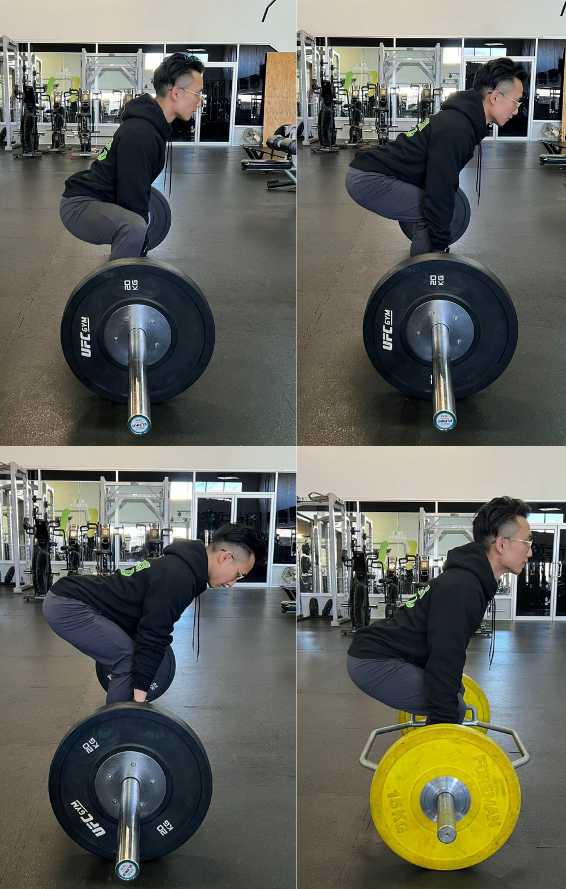November 21, 2020
16 Exercises for Building an Awesome Ankle
Hello, and welcome to the first of many Corrective Exercise Continuum protocol guides; pronation of the ankle. This article’s purpose is to provide the extra rationale for recommended exercises, provide videos demonstrating good form and good coaching, and create a library for your clients to study. In today’s protocol, we will be looking at one of the most common movement distortions. Pronation is a movement-compensation that develops for many reasons and exists when we observe a flattened arch, an adducted knee, and an internally rotated hip. Pronation can be on one leg or both (typically, activity habits and periods of maintained poor posture are the culprits of this particular distortion). You can observe ankle pronation in static and dynamic assessments, namely the overhead squat assessment, single-leg squat assessment, gait assessment, depth jump assessment, and joint-specific mobility assessments.
If you want to know more about BCPTI and the courses we offer, or if you want regular news updates, subscribe to our email list here! Thank you to all who follow us, we look forward to seeing you in class soon!
The National Academy of Sports Medicine provides a simple four-step process to improve joint function regardless of functional capacity. Whether you are working with a new fitness participant or a higher level athlete, NASM’s Corrective Exercise Continuum will improve joint function marginally or significantly. Without further ado, here is a Corrective Exercise Continuum protocol for overpronation at the ankles.
Step 1: Inhibit the Muscles acting on the Ankle
Exercise 1: Foam Roll Peroneals
The “Peroneals” are muscles located on the outside of the lower leg. They are responsible for lifting the outer edge of the foot, otherwise known as eversion. When this muscle tightens up, it draws the outer edge of the foot upward, which results in ankle collapse and pronation of the foot. Use this Myofascial Rolling technique to reduce the activity of the peroneals.
Exercise 2: Foam Roll Biceps Femoris
Despite the emphasis on ankle stability and mobility in this protocol, it’s important to remember that the structures above the ankle (the knee and lumbopelvic hip complex) will need to have cohesive, integrated movement. Using the foam roller, find the biceps femoris region located just above the backside of the knee. The “Pin and Move” technique is especially useful to balance knee-stabilizing forces.
Exercise 3: Foam Roll TFL
We journey further up the kinetic chain into the LPHC. Recall that “Pronation Distortion Syndrome” is a combination of three components: a collapsing foot arch, an adducted patella, and an internally rotated hip. In exercise #1, we address the collapsing arch. With exercise #2, the adducted patella. In exercise #3, we target the TFL (or Tensor Fascia Latae) to assist the neuromuscular system with the hip’s external rotation.
Step 2: Lengthen the Muscles acting on the Ankle
Exercise 4: Stretch Gastrocnemius
There are two muscles that we consider when we look at the calves. When optimizing ankle performance, it is vital to address both muscles individually. The two stretches for the calves are similar, so look closely. The gastrocnemius stretch focuses on the front leg. This particular stretch works both the gastrocnemius and the plantar fascia. When considering the Deep Longitudinal Subsystem of stability, we see the integration of plantar fascia and gastrocnemius; therefore, this particular stretch gives us more bang for our buck.
Exercise 5: Stretch Soleus
In this split stance, we focus on the rear leg. Lowering the back knee while maintaining a planted heel stretches the deeper soleus muscle. Resting plantar flexion is common; addressing soleus flexibility can improve many exercises; deadlifts and squats included.
Exercise 6: Stretch Biceps Femoris
This cross-body variation of the supine hamstring stretch addresses the rotational responsibility of the biceps femoris. We begin to combat the external rotation flexibility at the hips with a rotational stretch for the hamstrings. This stretch will dramatically change the way the knees track during squatting movements.
Exercise 7: Stretch Hip Flexors
Depending on how much time our client spends sitting down, we might find many instances of dysfunction at the hip flexors. The hip flexors can change the hip tilt, excessive anterior leaning, and a lack of neural drive to the gluteus maximus. We should probably stretch them, right?
Exercise 8: Stretch TFL
After foam rolling the Tensor Fascia Latae, the muscles become more pliable. When they are more flexible, they can stretch better. The TFL stretch will help the legs maintain a neutral alignment during split positions or single leg positions. Once again, looking at all of the joints in the leg to improve ankle function is vital. Stretching the muscles that act on the hips, knees, and ankles will let the participant control activation and integration exercises.
Step 3: Activate the Muscles acting on the Ankle
Exercise 9: Short Foot Activation
The activation regiment begins with the body part in closest contact with the floor; the foot. In the Short Foot Activation, participants focus all their attention on pulling their toes through the ground towards their heels. The two cues you will hear me use are “use the toes to grab onto the floor” and “lift your arch to the ceiling.” We spend a lot of time with our feet in shoes, using the shoe platform to sort out all of the balancing components. This “movement crutch” results in a lack of awareness through the plantar fascia and other ankle stabilizers. Using the Short Foot Activation, we increase the neural drive to the foot and plantar fascia muscles.
Exercise 10: Activate Tibialis Anterior
When it comes to corrective exercise, a good rule of thumb is to activate the muscles opposite to the ones we stretch and foam roll in the previous steps. How many of your clients have complained of “tight calves” or sore feet? After addressing the calves in steps #1 and #2, the lower leg’s logical activation is the tibialis anterior. Sometimes I explain this muscle as the “shin splint” muscle. The best part of this activation technique is using the foam roller on the calves to inhibit gastrocnemius further while also providing extra height to mobilize the ankle.
Exercise 11: Side Plank Abduction
The Side Plank Abduction is a great exercise that lets us work on the hip abductors, mostly the gluteus medius, which helps us manage leg alignment during squatting, lunging, and landing patterns. In this case, we get a chance to stabilize the Lateral Fascial Line while mobilizing the hips. The side plank abduction grants us an opportunity to see how well the ankles can laterally stabilize as well. Performing the Side Plank Abduction with the right activation sets us up for success with integrated patterns, namely the side lunge to balance integration.
Step 4: Integrate the Muscles acting on the Ankle
Exercise 12: Single-leg Balance Reach
The first integration, the Single-leg Balance Reach, demands that the grounded foot stabilizes while resisting forces in 360 degrees. The grounded foot should be in the “Short Foot” position, which is now freshly activated. When reaching forward, backward, sideways, and rotating, the foot moving toward the targets should be fully extended as it comes to each target. Take a look at the video to see this integration performed.
Exercise 13: Single-leg Balance Reach (Progression)
The progression to the Single-leg Balance Reach only changes one component. In this progression, the participant will hover over each target for a brief moment instead of touching the ground. In this new scenario, the expected feedback from touching down on the floor no longer exists, making balancing the short foot more challenging. Watching both videos back to back demonstrates how balance becomes harder.
Exercise 14: Step-up to Balance
This next integration adds load to an otherwise simple movement pattern. The Step-up to Balance integration takes an ordinary gait mechanic, the lunge, and takes it, literally, to a higher level. With the ankle in dorsiflexion at the beginning of the movement, the participant must lift their body weight a minimum of 12 inches with active short foot activation and deliberate leg alignment. Despite the step-up being a sagittal plane exercise, someone struggling to maintain alignment or balance will demonstrate compensations in the frontal and transverse planes. The information that we get from watching the movement will determine the cues we use to optimize movement.
Exercise 15: Side-lunge to Balance
Now we will approach the same movement pattern from a different plane of movement. The Side-lunge to Balance integration is excellent for reducing lateral ankle movement strains or injuries. Rolled ankles are a common nuisance and can lead to further injuries later on. Working on the side-lunge, we get a nice stretch in the hamstrings and peroneals on the outstretched leg while considering leg alignment in the squatting portion. The lateral balance challenge comes from gathering all the momentum and inertia from the lunge over the ankle in a smooth and controlled fashion.
Exercise 16: Single-leg Squat
The final integration, the holy grail of ankle function, is the Single-leg Squat. In the video below, you will notice this variation of the single-leg squat is done with feet and knees close together, so the hips don’t twist. Single-leg squatting while pushing the opposite leg back more closely imitates a lunge pattern, not a squat pattern. Of course, there are plenty of variations and tools that you can use to add more resistance or challenge to the single-leg squat, but make sure you master the basics first and earn the right to progress.
Keep an eye out for more Corrective Exercise Continuum protocols. We run NASM’s Corrective Exercise Specialist courses regularly, so make sure you subscribe to our newsletter and follow our Instagram page here!
Tags:
Related Posts
We’re here to help you!
Questions, comments or want to register? Fill out the form below and we will contact you shortly. Thanks!
"*" indicates required fields



